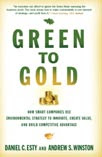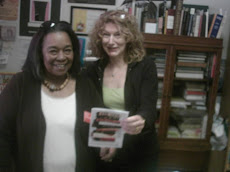Dr. Joachim, feature below, will also be joined by Anastasia Harrison from WESKetch Architecture, Inc. Anastasia is a licensed and LEED certified architect and one of the first indoor air quality certified professionals in the state and will share "Greening for Family Health: Improving Indoor Air Quality" with forum attendees. Multiple soft floating micro-island gyms on waterway paths. Energy is derived from human motion and converted to usable electric energy stored in on-board batteries.
Multiple soft floating micro-island gyms on waterway paths. Energy is derived from human motion and converted to usable electric energy stored in on-board batteries.
Building Open Opportunity Structures Together (BOOST) will launch their 2008-09 Green, Smart, and Sustainable Stakeholder Education and Training series of public awareness forums and community capacity building workshops from 11am noon until 4pm on Saturday, June 7 at Classics Used and Rare Books located at 117 South Warren Street. This event is free to the public and will feature a screening of Sundance "Big Ideas for a Small Planet, the Build" episode and a special appearance by Mitchell Joachim, principal with Terreform, a nonprofit philanthropic architectural design collaborative that integrates ecological principles in the urban environment. The GSS-SET launch will coincide with Classics Book Fair and Trenton's 30th annual Heritage Days Celebration.
Mitchell Joachim insists that his plans are not futuristic. As the Executive Director for Terreform, a “philanthropic design collective,” he is responsible for progressive solutions for current problems. Save for the overt reliance on CGI imagery, the plans he presented at Postopolis! seem robustly conditional on collective goodwill, but still grounded on hard statistics and grounded feasibilities. In the video above, he outlines his company’s plans in three main areas: the city, ecology, and mobility.
The City
Urban settings pose all sorts of problems for professionals who work with infrastructure, but even more so for those who are environmentally conscious. One of the biggest problems, argues Joachim, is circuity. Because cars have no intelligence and “will drive off a cliff and take you with it,” they spend a whole lot of time not knowing where they’re going, looking for parking, and being stuck in traffic. These preventable problems will be responsible for 60% of the entire energy usage in the United States by 2050.
Joachim sees the solution in intelligence.
The key is designing automobiles so the entire car is in the wheel, linked to other wheels on a municipal grid. In this model, the city is composed of interconnected networks.
Ecology
After explaining the obscene energy usage in the life cycle of a house, from chopping down trees using power tools to building remains dumped in landfills, Joachim brings back the idea of the living tree house.
Alongside MIT architects Laura Greden and Javier Arbona, Joachim presents their proposal for the Fab Tree Hab.
The proposed construction materials are organic, and we don’t mean metaphorically. The materials really are alive. Ficus, a parasitic plant that is soft during growth but hardens when exposed to air, can be given a certain structure to grow around and within. It can become a wall. It is a parasitic wall, but if you give them a structure to grow into or around it will grow.
Mobility
While eco-warriors see automobiles as evil, Joachim takes a different approach. He sold his Honda years ago, but he doesn’t think that’s anywhere near enough. He is looking for redemption and — according to him — we should be too.
“Efficiency essentially means playing a piano with a two-by-four,” says Joachim. “You hit every key and, great, you did an efficient job… efficiency means the car is still doing some damage… If you get it down to zero emissions, you’re not doing anything bad, but you’re not doing anything good.”
Enter his Concept Car, developed with GM and Frank O. Gehry.
These cars are SOFT (Sustainable Omni Flow Transport), soft (so soft in fact, that they “look like hug-and-kiss lamb cars”) and ecological. They move in herds. They are powered by the human buttocks. And they’re not the first of their kind. Not entirely, anyways.
In the 1920’s, Henry Ford extensively experimented with alternative materials for car manufacturing. Because he believed the booming automobile industry and American’s agricultural economy were “natural partners”, he sought to amicably unite them.
This is how he became a proponent of the soybean.
Ford used plastic made from soy meal to manufacture everything from glove box doors and accelerator pedals to steering wheel and dashboard panels. Even the entire body of the car could be (and was) made from soy-based plastic. The Model T’s paint and plastic parts, in fact, contained 60 pounds of soybeans.
It was a car just as durable, lighter, and more reasonable economically and environmentally. But then war broke out. After World War II, the petrochemical industry experienced a boom and the soy-based plastic car fell into oblivion.
Until now. The ailing Ford Motor Company, in partnership with the Lear Corporation, sends a nod in the direction of history with the launch of a new car. The seat backs and cushions of the 2008 Ford Mustang are made with soy-based foam.





































2 comments:
Not the first of Ford's attempts to experiment with new materials and salvaging waste. See http://www.kingsford.com/about/index.htm
Thanks, Pete:
Real interesting history here and please reach out to BOOST with more green, smart, and sustainable facts.
Tim Razzaq for BOOST and Partners.
Post a Comment